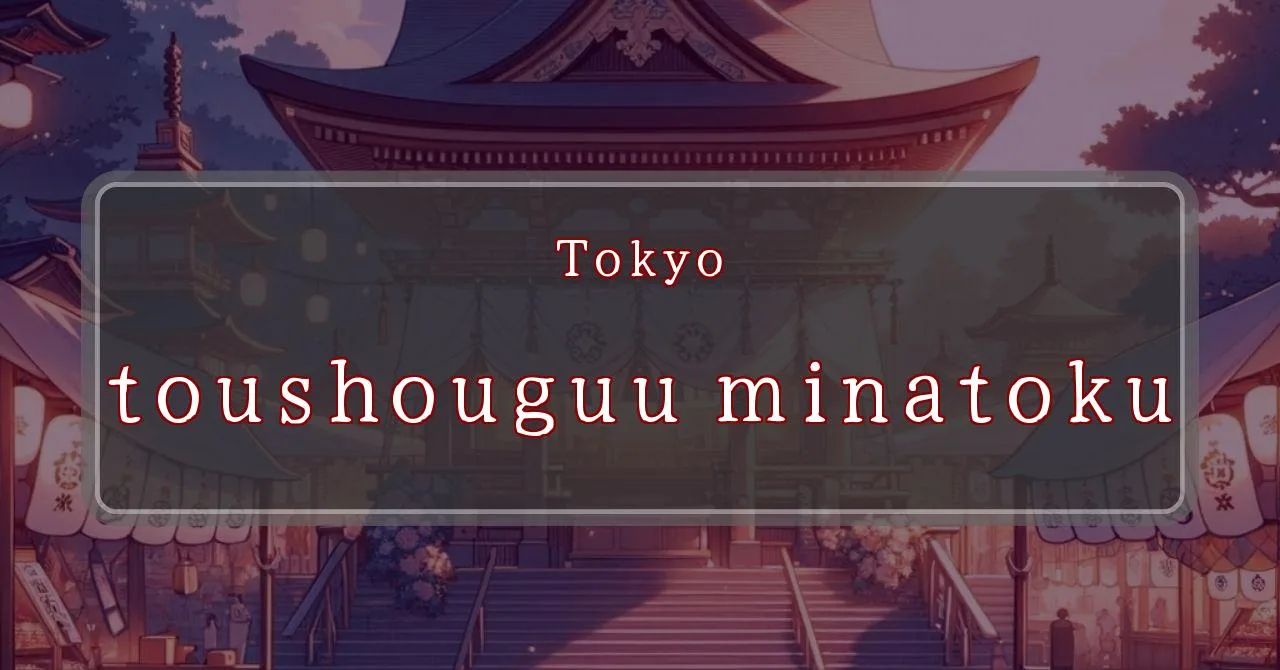Divine procession of a portable shrine under the autumn sky
Basic Information
The Toshogu Shrine is located in Shiba Koen Park, Minato Ward, Tokyo, and is dedicated to Tokugawa Ieyasu, the founder of the Tokugawa shogunate.
- Address: 4-8-10 Shiba Koen, Minato-ku, Tokyo 105-0012
- Phone Number: 03-3431-4802
- Access: A 1-minute walk from Shibakoen Station on the Toei Mita Subway Line, or a 2-minute walk from Kamiyacho Station on the Tokyo Metro Hibiya Line
- Festival Days: April 17th, 2024
Main Events and Attractions of the Festival
The Toshogu Shrine Festival is held annually on April 17th, the anniversary of Tokugawa Ieyasu’s death. The festival features a variety of events and attractions, including:
Mikoshi Procession
A portable shrine, or mikoshi, is carried through the streets of Shiba Koen Park by a team of people. The mikoshi is believed to be inhabited by the spirit of Tokugawa Ieyasu, and the procession is a way to pay respects to the founder of the Tokugawa shogunate.
Shishimai Dance
The shishimai dance is a traditional Japanese lion dance. The dance is performed by two people, one wearing a lion head and the other wearing a lion’s body. The shishimai dance is believed to bring good luck and ward off evil spirits.
Kagura
Kagura is a traditional Japanese Shinto dance. The dance is performed by a group of people, and it tells the stories of the gods and goddesses of Japan. Kagura is often performed at festivals and other special occasions.
Benefits and Deities
The Toshogu Shrine Festival is believed to bring good luck and ward off evil spirits. The festival is also a time to pray for a good harvest and for the health and prosperity of the community.
- Benefits: Good luck, warding off evil spirits, good harvest, health, and prosperity
- Deities: Tokugawa Ieyasu
Blessings and Deities
The Toshogu Shrine Festival is believed to bring good luck and ward off evil spirits. The festival is also a time to pray for a good harvest and for the health and prosperity of the community.
- Benefits: Good luck, warding off evil spirits, good harvest, health, and prosperity
- Deities: Tokugawa Ieyasu
Origin and History
The Toshogu Shrine was built in 1617, shortly after the death of Tokugawa Ieyasu. The shrine was originally located within the grounds of Zojoji Temple, but it was moved to its current location in Shiba Koen Park in 1641. The festival has been held annually on April 17th, the anniversary of Tokugawa Ieyasu’s death, ever since.
- Built: 1617
- Original location: Zojoji Temple
- Current location: Shiba Koen Park
- Moved: 1641
- Festival date: April 17th
Tips and Notes for Visitors
Here are some tips and notes for visitors to the Toshogu Shrine Festival:
- The festival is held on April 17th each year.
- The festival features a variety of events and attractions, including a mikoshi procession, shishimai dance, and kagura.
- The festival is a popular event, so it is important to arrive early to avoid crowds.
- There is a parking lot near the shrine, but it is limited. It is recommended to use public transportation or park in a nearby parking garage.
- The festival is a great opportunity to learn about Japanese culture and history.
Parking Information
There is a parking lot near the Toshogu Shrine, but it is limited. It is recommended to use public transportation or park in a nearby parking garage.
- Parking lot: Limited
- Recommendation: Use public transportation or park in a nearby parking garage
Popular Stalls and Food Carts in Recent Years
| Type of Stall | Description |
|---|---|
| Takoyaki | A staple at Japanese festivals. Characterized by a crispy outside and a creamy inside. |
| Jaga Butter | A simple yet popular snack of hot potatoes lavishly topped with melted butter. |
| Baby Castella | Small castella cakes, sweet and fluffy treats enjoyed by children and adults alike. |
| Grilled Ayu with Salt | Fresh ayu fish grilled whole with salt, a savory taste of Japanese summer. |
| Shaapin | A unique gourmet item influenced by foreign cuisine, with a chewy skin wrapping the filling. |
| Okonomiyaki | A Japanese grilled dish where you often choose your own ingredients for a personalized flavor. |
| Cotton Candy | A fluffy, sweet snack that’s extremely popular with children. |
| Chocolate Banana | A banana coated in chocolate, a fun and visually appealing dessert. |
| Kushiyaki | Various types of ingredients skewered and grilled, an easy-to-enjoy snack. |
| Yakisoba | Fried noodles mixed with a special sauce, a fast food favorite in Japan. |



